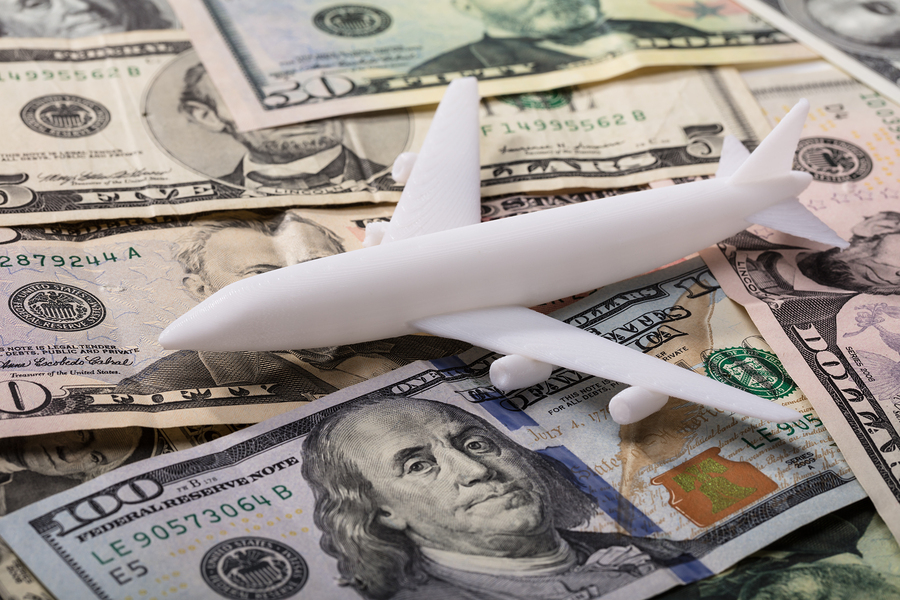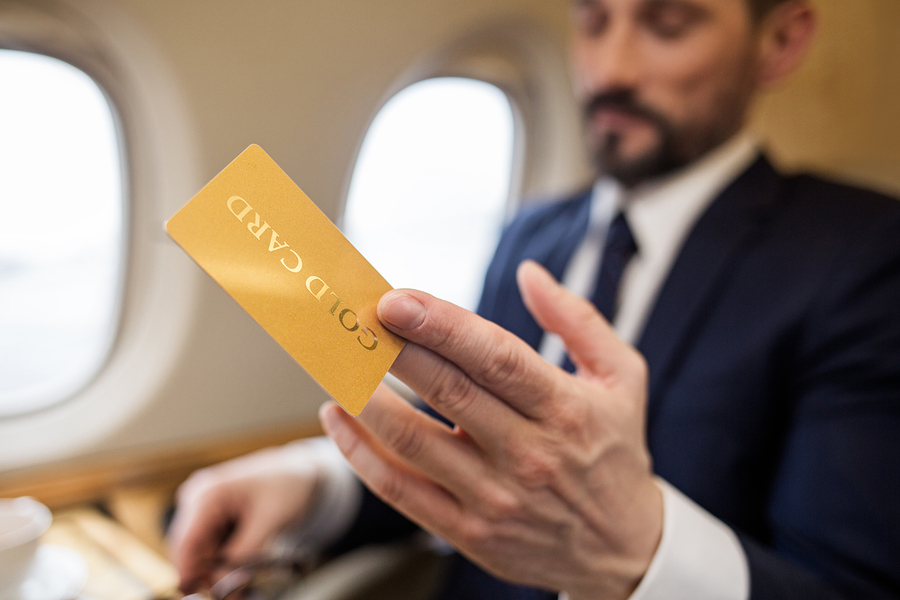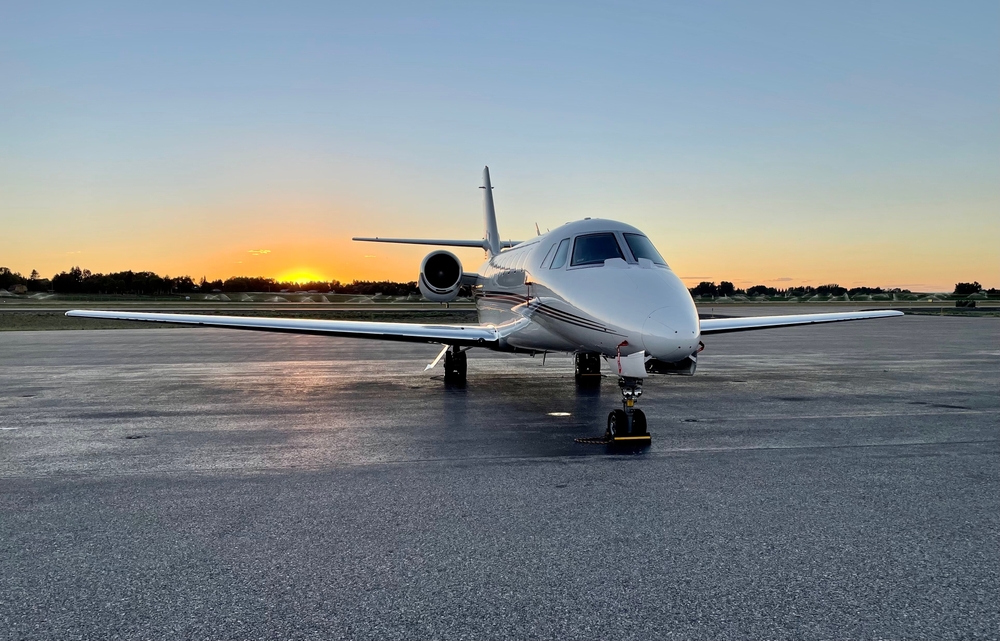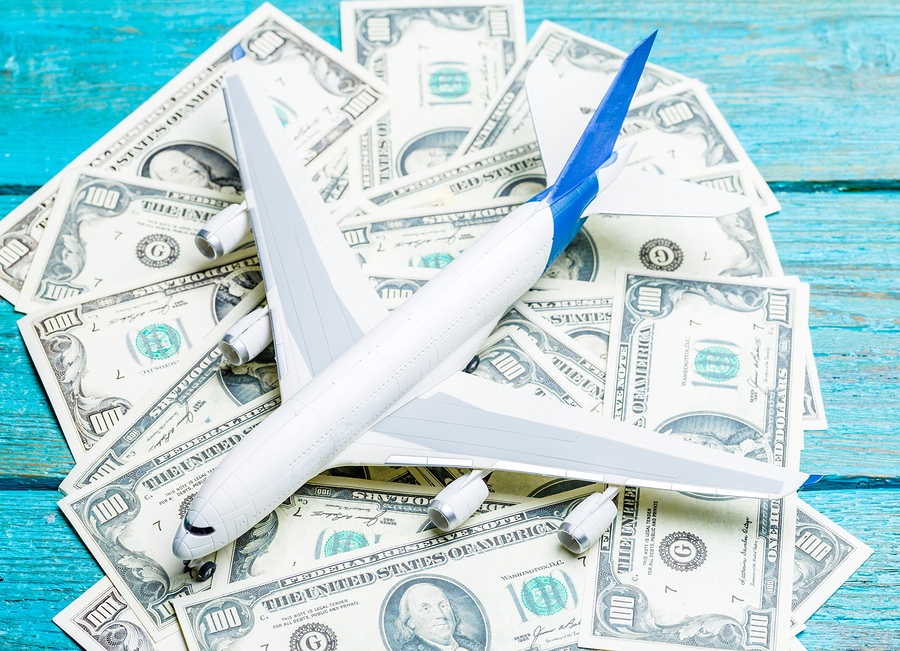For years, jet cards were the industry standard for fractional flights and charters. They ensure members access to jets on demand and steady revenue streams for fleet operators. But NetJets, the world’s largest private fleet operator, is changing the game. Moving forward, it won’t offer jet cards. Instead, it’s implementing a 25-hour leasing program — a change likely to launch a new trend in the private charter sector.
The shift to a fractional leasing model
As it says goodbye to jet cards, NetJets is opting for a fractional leasing model for its aircraft. The model isn’t technically new: NetJets previously offered fractional leasing at 50 hours for its more frequent flyers, with jet cards serving as an introductory offer. Now, the company has lowered the bar for fractional leasing to 25 hours — and done away with jet cards.
What’s the reason for this shift? NetJets can more easily sell against its fleet capacity, which is growing rapidly in the post-pandemic world. As private aviation user rates continue to rise, NetJets is positioned to capitalize on that demand through a fractional leasing model, as opposed to the classic jet card strategy.
Although time will tell if customers appreciate the shift, early indications show NetJets retaining and growing its user base under the fractional leasing model. The company reportedly wait-listed more than 2,000 jet card applications in 2021. Opening access to its fleet through a fractional leasing model sets the stage for a new phase of revenue growth from those with a preference for private aviation.

What does the 25-hour lease program entail?
Jet card enthusiasts need not fret over the discontinuation of this membership model. NetJets appreciates the significance of jet cards for infrequent flyers, which is why its fractional leasing model is tailored specifically to support an entry-level user base. Details of the new program include:
- Three- and five-year commitments, with 25 hours per year.
- 45 blackout dates and 45 peak days.
- Extra hours available for purchase at a premium each year.
- Rollover of unused hours into upcoming years.
- A fleet including the Phenom 300, Citation XLS, Citation Sovereign, Challenger 350, and Challenger 650.
Essentially, NetJets is giving significant access to its fleet with a model designed to accommodate users on demand over a period of years. Minimum restrictions, rollover hours, and the flexibility to buy more hours allows private flyers to control their experience without jet cards.

Jet cards could be gone for good
NetJets isn’t the only provider to ditch jet cards in 2022. More than a dozen charter companies suspended jet card sales last year, and few have opted to reinstate them, signaling a new era of fractional leasing models for private aviation.
The expert jet brokers at L & L International are here to help you acquire the perfect jet. Need to sell your jet? We can assist with that, too.
Contact the private aviation professionals online, at
sales@L-Lint.com, or at
+1 (305) 754-3313.
COVID-19 has hit the private aviation industry hard — particularly charter companies. Overlooked by the CARES Act and other aviation stimulus packages, regional charters have had to fend for themselves in an environment where air travel borders on taboo. With planes grounded and staff furloughed, it’s hard to find consistent revenue. But that hasn’t stopped some of the industry’s foremost players from tugging on their bootstraps.
Here’s a look at some of the strategies private charter companies have adopted to combat the effects of Coronavirus, and what they mean now and post-pandemic.

The cost of flying has plummeted dramatically
For many private aviation companies, the key to attracting new customers has been slashing the costs of their jet cards. Thanks to coronavirus legislation, customers no longer have to pay the 7.5 percent Federal Excise Tax (FET) on their flight hours. This saves customers tens of thousands of dollars, making it easier to justify maintaining or even purchasing jet cards in the current climate.
In addition to not charging FET, many charters have lowered their hourly rates by 7.5 percent. However, companies like Sentient Jet is going the extra mile and reducing deposits for their jet cards as well. NetJets has similarly reduced their 25-hour membership by 11 percent. Reduced jet card prices and tax-free flying are unique offers that are hard for opportunistic flyers to pass up.
Some charters discovered they can attract new customers by offering cheaper on-demand flights. JetSuite is offering new customers a one-time flight at the reduced price previously available only to members. This promotion resulted from a surge in evacuation flights back in early March. Then, people were using private jets for the first time. This new desire to fly privately is letting charters like JetSuite get their foot in the door.

Charters are weathering the storm
The spike in demand for private jets has passed. Now, charters are trying to make the most of their current economic situation. To keep the industry afloat, Jets.com is now offering a 10-hour jet card that allows flyers to refund unused hours. That way, flyers can use private jets on an as-needed basis with zero commitment.
This 10-hour deal comes with all the perks of your typical jet card. Customers can book flights at the drop of a hat with fixed pricing and won’t have to pay repositioning fees. On top of that, they’re guaranteed a replacement jet for delays unrelated to weather.
Other than discounted jet cards, charters are hoping to receive state and federal aid. Though, as of right now, the U.S. federal government has prioritized commercial airlines.

Private aviation has a bright future
Private jet operators such as flyExclusive are confident the private aviation industry will make a strong comeback after the COVID-19 pandemic. Even after countries lift their travel restrictions, flyers will seek private jets to avoid crowded commercial airports. The fear of contagion will long surpass the duration of the pandemic.
Once life slowly returns to normal, flyers will rush to book flights for all their postponed business ventures and personal plans. They’re sure to have some unused hours left on their discounted jet cards. And if that’s the case, flyers will certainly choose a private jet over a commercial airline still tainted with the stigma of COVID-19.
The expert jet brokers at L & L International are here to help you acquire the perfect jet. Need to sell your jet? We can assist with that, too.
Contact the private aviation professionals online, at
sales@L-Lint.com, or at
+1 (305) 754-3313.
Buying a jet is no small investment. Even beyond the multimillion-dollar purchase price of the jet itself, there’s the cost of fuel, crew, maintenance, storage, and more to consider. To prevent your jet from becoming a money pit, you’ll need to find ways to offset the cost of ownership. Luckily, savvy jet owners can do a few things to mitigate their costs over time — and eventually offset the entire cost of the jet.
Create a revenue stream
The simplest, most lucrative way to offset the cost of private jet ownership is to turn your asset into an active revenue stream. Allowing clients and private customers to charter your jet gives you the ability to charge for its use, rather than watch it depreciate in a hanger. You’ll need a few things to get started.
A good aircraft management company is imperative. A management company will take care of bookings, handle staffing, ensure maintenance, and oversee anything else that goes along with chartering your aircraft. With the right management company on your side, you’ll have to do almost nothing to start earning revenue from your jet.
Next, you’ll need to position your jet in a hub where it’s going to see use. Parking it at an airfield like LAX or ATL will almost guarantee clientele, since these are major flight hubs. Keep in mind what while this opens up the potential for revenue, your jet won’t always be instantly accessible to you.
Finally, make sure you’re chartering good flights. This means booking round-trip charters to double your cash flow or having a return flight booked from a destination back to your hub.

Unlock your full business potential
Buying a private jet isn’t just about making a statement. Remember, you can also leverage a jet into business operations as an asset. Being able to fly from ORD to DXB or LHR opens you up to international business — and doing it without the frequent cost of flying first-class commercial is a great reason to invest in an aircraft. When you compound saved costs with new business revenues, you might find that a good chunk of your jet pays for itself!
In addition to this, you may also be eligible for tax breaks and discounts for crew training, fuel, insurance, and hangar costs. Flying more than 300 hours annually can warrant a full-time crew, which becomes important if you’re making frequent international trips.
The power of depreciation
 The single biggest tool for recouping the cost of your private jet is the jet itself: specifically, depreciation. Thanks to depreciation write-offs, private jet owners could write down as much as 70% of their jet cost in the first three years of ownership! This is because the IRS-specified use life of aircraft is just five years. Even though most jets are owned for far longer, after five years the IRS considers them fully depreciated — which means you can salvage much of the ownership cost.
The single biggest tool for recouping the cost of your private jet is the jet itself: specifically, depreciation. Thanks to depreciation write-offs, private jet owners could write down as much as 70% of their jet cost in the first three years of ownership! This is because the IRS-specified use life of aircraft is just five years. Even though most jets are owned for far longer, after five years the IRS considers them fully depreciated — which means you can salvage much of the ownership cost.
A combination of private charters, practical use, and creative tax write-offs can help you recoup the cost of your private jet purchase quicker than you think. And once you’ve recovered the cost you initially paid, any additional revenue your jet unlocks is pure profit. It’s a smart way to turn a balance sheet liability into a major asset.
The expert jet brokers at L & L International are here to help you acquire the perfect jet. Need to sell your jet? We can assist with that, too.
Contact the private aviation professionals online, at
sales@L-Lint.com, or at
+1 (305) 754-3313.
Many people think simply owning a private jet is the pinnacle of luxury. But, like everything else in life, the sky is the limit for exactly how sophisticated this investment can be. Between top-end tech, comfort amenities, and in-flight service, many private jets take lavishness up a notch. After all, if you’re spending tens of millions on your own personal jet, why not make sure you’re getting your money’s worth?
Luxury private jet features
Buying a private jet is one of the biggest investments a person can make, so it’s no wonder that jet buyers seek out the best of the best when it comes to features, finishes, and amenities.
Whereas practicality weighs heavily into purchasing a car, private jet purchases are often made with all the bells and whistles in mind. In response to these consumer demands, private jet makers are pulling out all the stops to deliver the most luxurious flight experience possible.
Here are five of the most luxurious amenities modern jet manufacturers are incorporating into their aircraft.
- Gourmet kitchens: Airplane food has been the subject of endless complaints from flyers for decades. With a full-sized kitchen, private jet owners can enjoy freshly prepared meals no matter where they roam.
- Full-sized bathrooms: When you’re rushing to a meeting hours (or even minutes) after you land, you might not have the opportunity to freshen up beforehand. That’s why so many private jet owners choose aircraft with full-sized bathrooms, featuring showers for passengers.
- Theater systems: Jet owners spend much of their time on business while they’re flying, but that doesn’t mean they don’t need time to unwind. Theater systems with large screens, surround-sound speakers, and luxurious seating are highly popular among prospective jet owners.
- Meeting rooms: On longer flights, jet owners have the opportunity to get some work done as they travel to their next destination. With onboard meeting rooms — complete with conference tables, chairs, and high-tech presentation equipment — jet owners can collaborate with their team and get work done from anywhere.
- Dedicated bedrooms: After hours of hard work, everyone needs some time to rest and recharge. Dedicated bedrooms in private jets offer the perfect place for jet owners to unwind and rest in complete privacy.
 What more could you want from a private jet? The amenities go far beyond what’s listed here, and there’s no telling what the next wave of luxury aircraft amenities will be.
What more could you want from a private jet? The amenities go far beyond what’s listed here, and there’s no telling what the next wave of luxury aircraft amenities will be.
The future of private jets
As technology develops and improves, private jets are becoming even more luxurious. The developments made in the coming decades will enable manufacturers to produce lighter components that permit more ambitious jet interiors, defined by seamless layouts, sophisticated design, and enhanced functionality.
Would you rather have an in-flight theater system or a state-of-the-art lounge chair? A full kitchen or a spacious boardroom? Regardless of your preferences, rest assured they’re rooted in luxury when you purchase a private jet.
The past couple of years have been exciting — and often confusing — regarding taxation in the United States. The GOP’s latest tax overhaul is a prime example of the major changes we continue to see for many aspects of the tax code. These changes affect individuals, families, small businesses, and large corporations in different ways. And while the updated law can be a challenge for some to get used to, it also offers a host of benefits.
For business owners and executives looking to purchase a private jet, the new tax code offers a major incentive to buy now. A tax loophole, which allows those who buy private jets to deduct the purchase from their taxes, has driven a rising demand for private aircraft.
What’s the loophole?
The 2017 Tax Cuts and Job Act passed by the GOP last year included a policy change regarding bonus depreciation for transportation items. Bonus depreciation is a tax incentive that allows businesses to deduct a large portion of the price of business assets.
Previously, eligible business purchases, including private jets, qualified for 100% bonus depreciation — but this bonus depreciation was not immediate. The new tax cut makes business jets eligible for immediate 100% bonus depreciation.
For many businesses, this tax loophole effectively means they can purchase a business jet at no net cost to them depending on the specifics of their taxes.

What does it mean for jet buyers?
The government will not foot the bill for your private jet, but this loophole makes it possible for you to immediately offset 100% of your purchase cost through a bonus depreciation.
Under the new law, the price of any aircraft purchased and put into service between September 27, 2017, and January 1, 2027, can be deducted from taxes as an immediate bonus depreciation. If the cost of your jet exceeds what you owe in taxes, the bonus depreciation you write off could leave you owing nothing in taxes.
This tax loophole for jet purchase has spurred a buying frenzy. For many businesses, the loophole makes it possible for them to purchase a jet that might have been out of their price range were it not for the new bonus depreciation policy. The market has seen significant increases in demand since the announcement of the new tax bill, with more and more buyers interested in purchasing business aircraft.

The ripple effects of increased industry action
Even businesses without the funds to purchase a private jet still benefit from the incentives. New companies that offer jet time-sharing and partial ownership are growing as a result of the new tax bill, and more and more businesses are taking advantage of these affordable business aviation options.
The business aviation market has seen an uptick in demand at every level since the announcement of the new tax loophole. This renewed demand is welcome news for an industry that experienced declines in recent years. For many businesses, this change opens the door to entirely new transportation opportunities to take their travel to new heights.
 Any time you make an investment, you want to feel confident you’ll get a good return. Unfortunately, many people who invest in private jets miss out on potential returns by failing to capitalize on opportunities to monetize their assets.
Any time you make an investment, you want to feel confident you’ll get a good return. Unfortunately, many people who invest in private jets miss out on potential returns by failing to capitalize on opportunities to monetize their assets.
Your jet doesn’t have to be a drain on your resources. By understanding the costs associated with jet ownership and the opportunities you have to offset those costs, you’ll maximize the return on your investment.
The true cost of jet ownership
While you might focus on the cost of the jet itself when you start shopping around for aircraft, the reality is that your initial purchase is just the beginning. Several major expenses associated with private jet ownership and use exist, and it’s important to be familiar with these various costs before you make a purchase.
- Jet purchase — Private jets vary widely in price, but you can expect to pay anywhere from $3 million to $90 million depending on the size, performance, features, and customization options you choose. New versus pre-owned is also a major factor in price.
- Insurance — Insurance fees will cost you between $30,000 and $50,000 annually depending on the aircraft’s age, payload, and average flight hours.
- Maintenance and operation — Jet maintenance and operation can be costly. You need to pay for crew, fuel, oil, landing fees, and maintenance of your jet’s mechanical and technological systems. All told, maintenance and operation for your private jet can range from $700,000 to $4 million annually depending on various factors.
- Storage — When your jet isn’t in use, you’ll have to store it in a hangar. Hangar fees are usually around $80,000 annually but can vary. If you choose to keep your jet stored at a large international airport, you may pay upwards of $160,000 a year.
Excluding the initial purchase of your jet, you will likely pay around $5 million to operate your jet on an annual basis. For many, this annual cost simply isn’t in the budget. However, there are steps you can take to offset this cost and ensure that you’re getting a great return on your investment in a private jet.

Chartering a jet to offset costs
The amount you can earn by chartering your jet depends on a few factors, including the jet’s size, where it’s going, and the trip’s length. For a trip from New York to London, a passenger may pay as much as $85,000 to charter a jet one way. While chartering out your jet when you aren’t using it probably won’t pay for operational expenses completely, it can significantly offset your annual costs.

Jet ownership is as much about logistics as it is about cost, but these two considerations go hand in hand. Before you spring for the private jet you’ve had your eye on, think about the logistics and cost of your purchase. With good planning and forethought, you’ll make the most of your investment.
The expert jet brokers at L & L International are here to help you acquire the perfect jet. Request a private jet charter quote
here. Need to sell your jet? We can assist with that, too.
Contact the private aviation professionals online, at
sales@L-Lint.com, or at
+1 (305) 754-3313.











 Any time you make an investment, you want to feel confident you’ll get a good return. Unfortunately, many people who invest in private jets miss out on potential returns by failing to capitalize on opportunities to monetize their assets.
Any time you make an investment, you want to feel confident you’ll get a good return. Unfortunately, many people who invest in private jets miss out on potential returns by failing to capitalize on opportunities to monetize their assets.